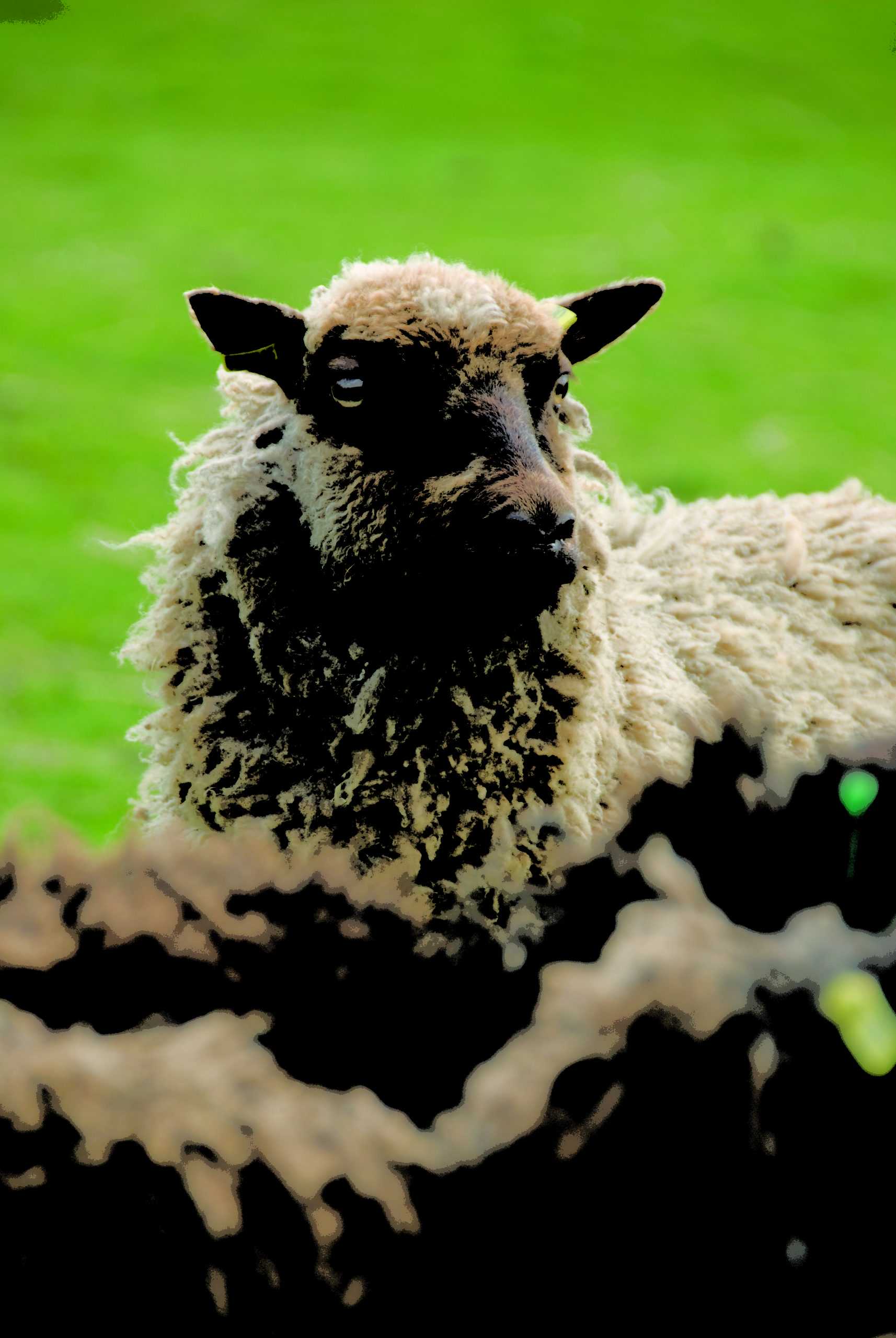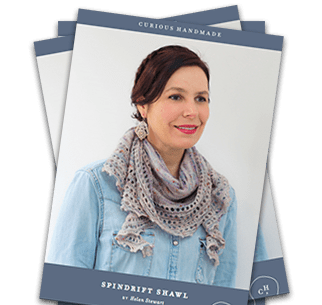As we continue to go deeper into the theme of creativity this month, I’ve made a point of celebrating the yarns I’ve been working with on my recent projects. Whether we’re talking about a painter and their paints, a sculptor and their clay, a sewist and their fabric, or a knitter with their wool, the role that materials play in any creative person’s work is hard to overstate. The nature of your material, its qualities, character, and even personality can absolutely transform the way you create. Materials can provide the first seeds of inspiration for your work, and they can surprise you, delight you, and even take you to new heights of craftsmanship and originality. I’ve certainly found this to be the case with the wonderful yarns I used for all of my Whispering Island shawl samples. Knowing the story behind the yarn has added so much to my creative process. I’m excited to share this post by Sonja from Blacker Yarns on how the wool that goes through their mill is farmed, sourced, and spun into some of the finest yarn available today. Enjoy!
– Helen
Blacker Yarns is quite a special yarn company because it is one of the only British yarn companies to come with its very own mill attached – The Natural Fibre Company. NFC not only process Blacker Yarns, they also work with farmers and small business owners to create unique and special yarn, spinning fibre and woolly delights. Our mill has a small minimum quantity, which is ideal for farmers like Ben Hole of Hole & Sons who are looking to do something more with their fibre. I know Ben was keen to emphasise the wonderful story behind his yarn and we were happy to help him.
At Blacker Yarns, we have a very strong relationship with our suppliers. We try to find the best quality fibre available. We support British farming by paying fair prices for the best fleece and building long term relationships with these suppliers. We care about what we do – by using traditional low impact methods to produce our yarns, we are able to do our bit for the environment, rare breed preservation and sustain our local communities.
I am so thrilled by the growing awareness of buying local. We’re entering such an exciting phase in the fibre industry. Increasingly knitters are starting to ask questions about the stories behind their yarn. This awareness is perfect for us! We love inviting people to visit the mill (see the website for this year’s dates) and inviting them to explore our production process. As a knitter myself, I think that sense of connection with real animals – and the people who raise them – can do so much to enrich one’s crafting experience.
Some of the yarn we produce, like our Blacker Swan Merino, is farm assured which means the fibre comes from one particular farm. Other yarns, like the Shetland used for Helen’s gorgeous shawl, come from a number of small farms up and down the UK. We record where the fibre for each individual batch comes from, so we are often able to let people know the source of their fibre if they email us directly. This is something rather unique and only possible when buying direct from farmers. Currently most of our Shetland yarn comes from farms in Wiltshire and Somerset.
Shetland fleece is matt and one of the finest of all British breed wools. These hardy little sheep date back to the 8th century and the Viking conquest. Their fleeces come in a vast array of natural shades the names of which can be found in Norsk nomenclature. These magical words like ‘Katmogit’, ‘Moorit’ and ‘Gulmogit’ are all centuries old and filled with a wonderful romance.

The north of Scotland has always had a difficult climate and the people living there would have needed warm garments to protect themselves. So it is likely that Shetland sheep have always been bred with a mind to the quality of their fibre. From the 17th century onwards, Shetland islanders’ have created high quality knitted goods for export across Europe and the world. For this reason the breed has a few distinctive qualities. Shetland sheep come in a vast array of natural shades from white, through to fawn, chocolate brown and black. These shades can be blended or dyed and then used to knit those distinctive Fair-Isle patterns we all know and love. The fibre also works wonderfully for lace work, creating a light and airy fabric which holds its block wonderfully. Shetland yarn will felt well and is highly resistant to the tendency that some softer fibres have to pill.
Our Shetland yarn is available in both 4-ply and DK. We select the finest fleeces we can find, so this breed is a wonderful place to start if you’re thinking of delving into breed specific yarns. We offer a wide variety of natural shades which are complemented by a few dyed shades in the 4-ply only.
Both weights retail at £5.70 a ball, but are currently on sale for £5.20 a ball until 22nd June.






